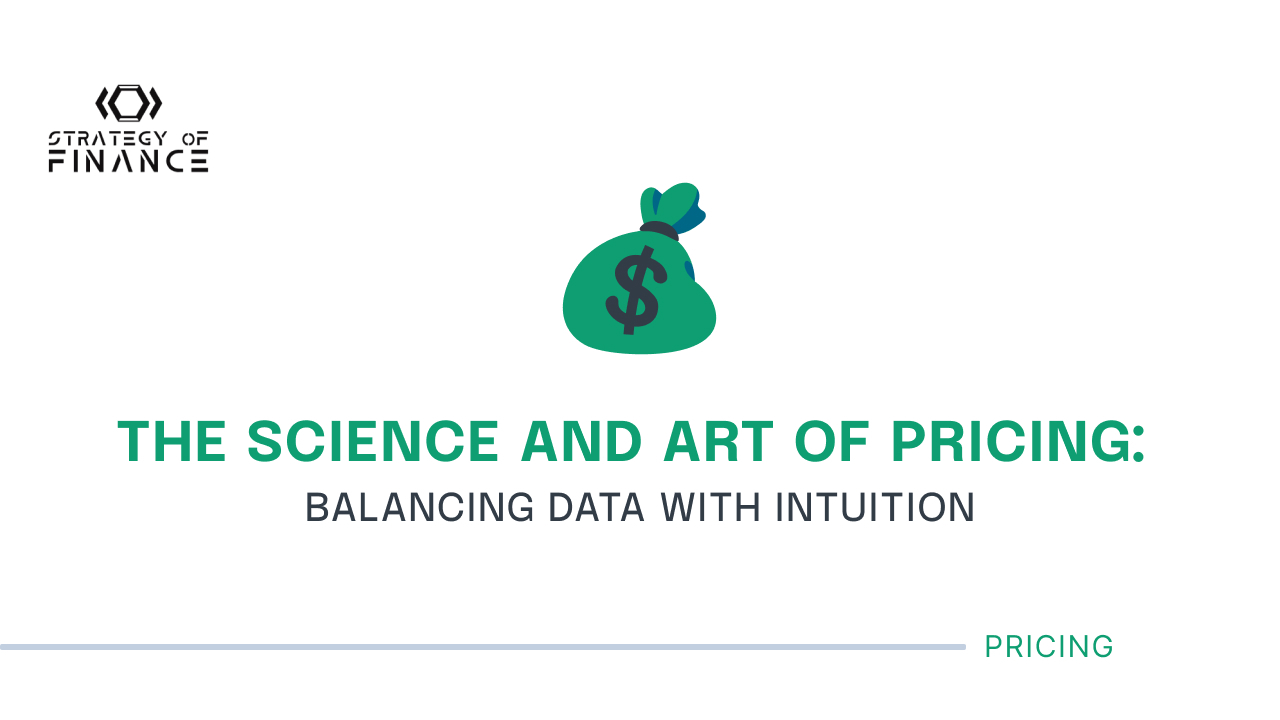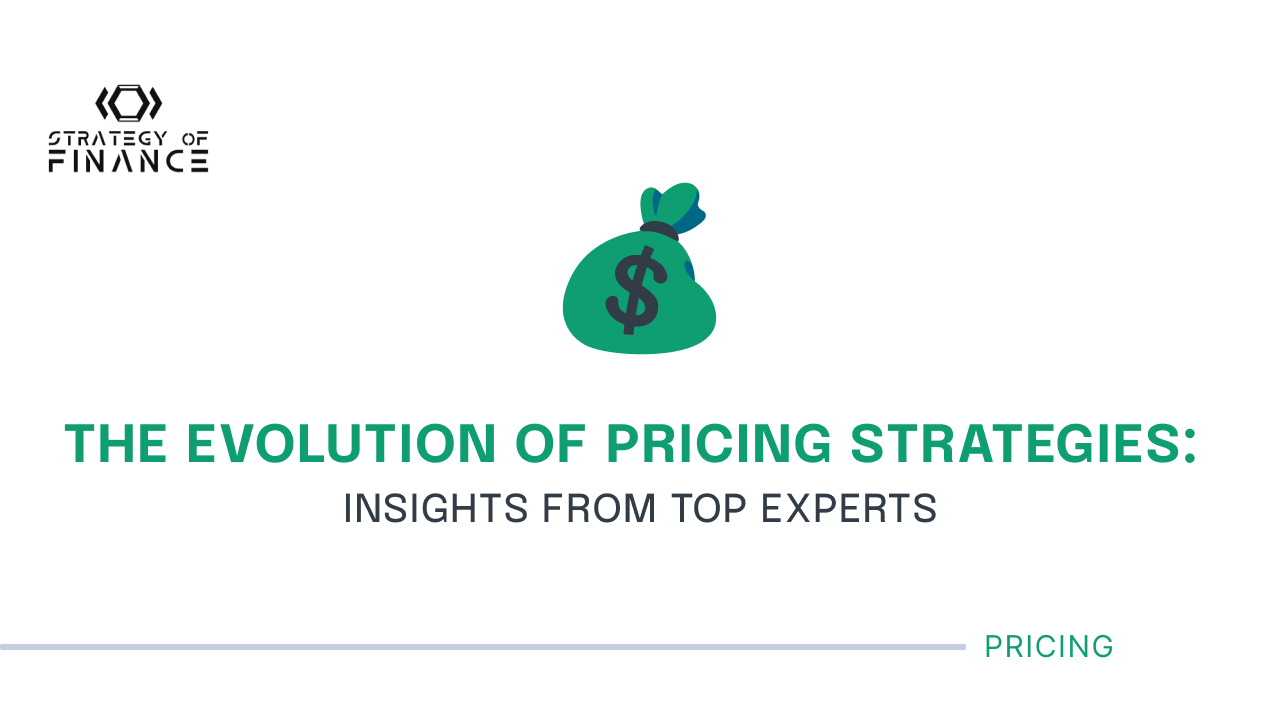The Science and Art of Pricing: Balancing Data with Intuition

The Science and Art of Pricing: Balancing Data with Intuition
Introduction
Pricing is often viewed through two lenses: science and art. While data-driven methodologies offer precision and predictability, the human touch introduces intuition and creativity. Top pricing experts Per Sjofors, Tim Smith, and Jean-Manuel Izaret (JMI) advocate for a balanced approach, integrating rigorous quantitative analysis with a deep understanding of market dynamics and consumer behavior. This article explores how businesses can effectively blend the science and art of pricing to achieve optimal results.
The Science of Pricing: Precision and Predictability
Quantitative Analysis and Data-Driven Decisions
Tim Smith, with his background in mathematics and physics, epitomizes the scientific approach to pricing. His methodology involves leveraging quantitative tools to derive precise pricing strategies.
Key Elements:
- Data Collection and Analysis: Gathering extensive data on market conditions, competitor pricing, and consumer behavior forms the backbone of scientific pricing. This data is then analyzed to identify patterns and trends.
- Statistical Models: Using statistical models, businesses can predict how price changes will affect demand and revenue. These models help in setting prices that maximize profitability while maintaining competitive positioning.
- A/B Testing: Experimenting with different price points through A/B testing allows companies to determine the most effective pricing strategies. This iterative process ensures that pricing decisions are based on empirical evidence rather than assumptions.
Case Study: Tim Smith’s Quantitative Approach
Tim Smith’s work with software companies demonstrates the power of quantitative analysis. By employing rigorous data collection and statistical modeling, Smith has helped companies optimize their pricing strategies, leading to significant revenue growth and market share expansion.
The Art of Pricing: Understanding Human Behavior
Behavioral Economics and Customer Psychology
Per Sjofors, known as “The Price Whisperer,” firmly believes that Pricing is a science, rather than an art. He emphasizes the importance of understanding customer psychology in pricing but this “art” is part of his science. His approach is rooted in behavioral economics, which examines how psychological factors influence purchasing decisions.
Key Elements:
- Price Perception: How customers perceive value is crucial. Factors such as price anchoring, where initial price exposure influences subsequent price perceptions, play a significant role.
- Emotional Responses: Pricing can evoke emotional responses that impact purchasing decisions. Understanding these emotional triggers allows businesses to set prices that resonate with their target audience.
- Customer Segmentation: Different customer segments may perceive value differently. Tailoring pricing strategies to these segments ensures that prices align with the perceived value of different groups.
Case Study: Per Sjofors’ Behavioral Insights
Sjofors’ work in various industries has shown how small price adjustments, informed by an understanding of customer behavior, can lead to significant increases in profitability. His “1% Challenge” illustrates how even minor price changes can have a substantial impact on the bottom line.
The Intersection: Balancing Science and Art
Integrating Quantitative Analysis with Behavioral Insights
Jean-Manuel Izaret (JMI) advocates for a balanced approach that combines the precision of quantitative analysis with the nuanced understanding of customer behavior.
Key Strategies:
- Value-Based Pricing: Combining data on customer willingness to pay with insights into how they perceive value, businesses can set prices that reflect both empirical evidence and psychological factors.
- Dynamic Pricing: Leveraging data analytics to adjust prices in real-time based on market conditions and consumer demand, while ensuring these changes are perceived as fair and justified.
- Market Segmentation: Using data to identify distinct customer segments and tailoring pricing strategies to each segment, considering both quantitative metrics and qualitative insights.
Case Study: JMI’s Strategic Integration
JMI’s work at Boston Consulting Group demonstrates the effectiveness of this integrated approach. By combining quantitative tools with a deep understanding of market dynamics and consumer behavior, JMI has helped companies develop robust pricing strategies that drive growth and competitive advantage.
Practical Applications: Implementing a Balanced Pricing Strategy
Step-by-Step Guide
- Data Collection: Begin with comprehensive data collection, including market research, competitor analysis, and customer surveys.
- Statistical / Algorithm Modeling: Use statistical models to analyze the data, identify optimal price points and adjust prices in real-time.
- Behavioral Insights: Incorporate insights from behavioral economics to understand how customers perceive value and respond to price changes.
- Segmentation: Segment the market based on data and behavioral insights to tailor pricing strategies to different customer groups.
- Dynamic Adjustments: Implement dynamic pricing strategies that adjust prices in real-time based on market conditions and consumer behavior.
- Transparency and Communication: Clearly communicate the reasons behind price changes to customers to maintain trust and transparency.
- Continuous Monitoring: Continuously monitor pricing performance and make adjustments based on new data and evolving market dynamics.
Conclusion
The science and art of pricing are not mutually exclusive but complementary. By integrating quantitative analysis with a deep understanding of customer behavior, businesses can develop pricing strategies that are both precise and intuitive. The insights from Per Sjofors, Tim Smith, and Jean-Manuel Izaret highlight the importance of a balanced approach, ensuring that pricing decisions are grounded in data while resonating with human psychology. This holistic strategy not only maximizes profitability but also enhances customer satisfaction and loyalty.
***
June 14, 2024 By Rohit Agarwal
Related Content

June 06, 2024

Author & Pricing Expert at Wigalf Picing
Entertainment.
Energy.

The Price Whisperer, Pricing Expert & Consultant
Intelligent.
Practical.








